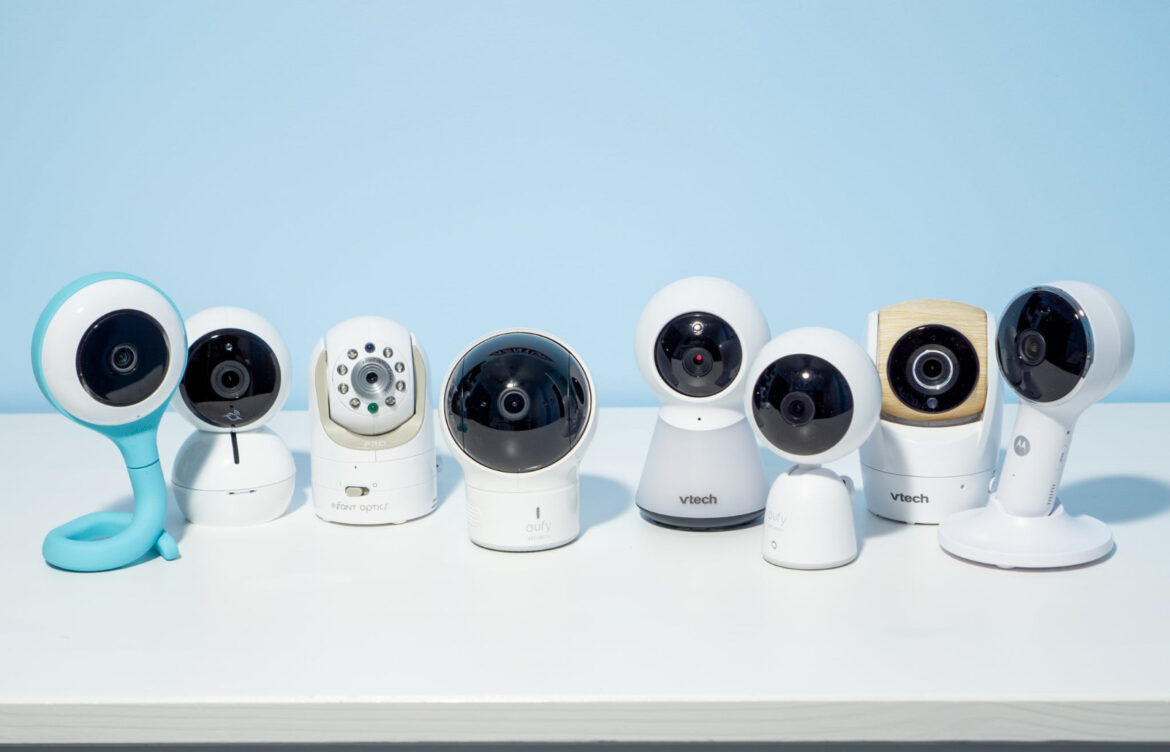
Types of Baby Monitors
Every parent out there knows how much of a blessing baby monitors are. They help put your mind at ease at night and give you more freedom of movement while your baby is sleeping, which are priceless facts if you’re a new parent.
That said, I know how buying a reliable monitor for your baby can be hectic. The choices are a lot, and they all look similar from the outside, so which one should you choose?
First things first, baby monitors come in 5 different types, and I’ll tell you all about them in this article. After you know what type you want, check my buying guide about how to choose the right baby monitor!
5 Types of Baby Monitors: Pros and Cons
I’ll tell you everything you need to know about each type of baby monitor in detail, including their uses, pros, and cons, so let’s get to it!
1. Audio-Only Monitors
You can say that audio-only monitors are the original form of baby monitors. They’re a classic invention that only emits audio without any visual outputs.
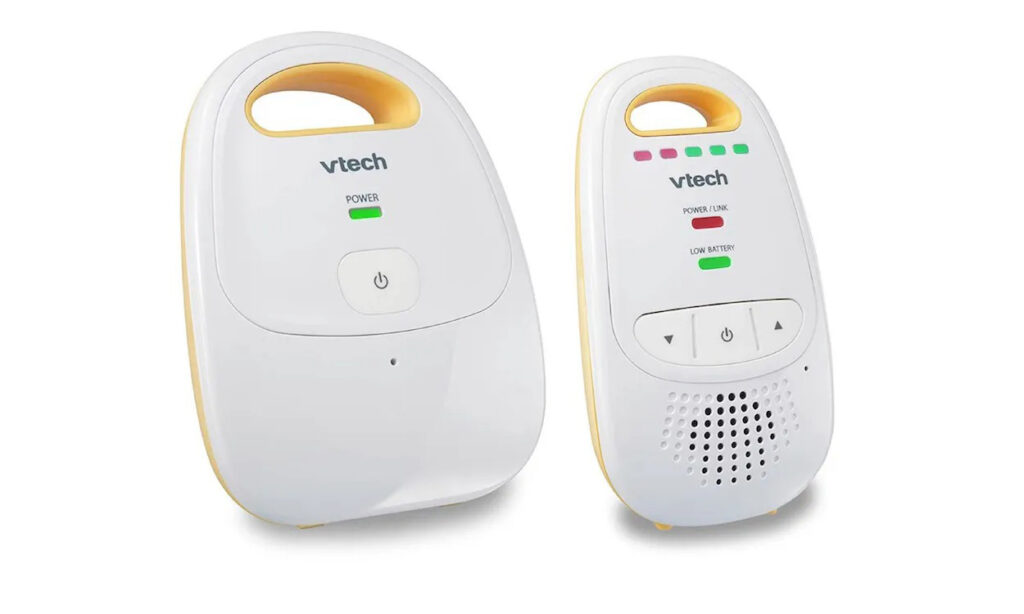
An audio monitor consists of two parts, a pickup and a receiver. You’re supposed to put the pickup in your baby’s room so that you hear any sounds there. If your newborn wakes up and cries, you’ll hear them through the receiver.
Pros
Here’s a quick list of audio-only monitors’ pros:
- Budget-friendly
- Long battery life because of the lack of visuals
- Better distance ranges than video monitors, so you can move with more freedom
Cons
Audio-only monitors come with the following cons:
- You might have a hard time differentiating your baby’s sleeping noise from their waking noise because of the lack of visuals
- You won’t be able to see if your baby is sleeping in the wrong position or moving
2. Non-WiFi Video Monitors
Most non-WiFi video monitors deliver both audio and visuals, and they consist of two parts. The first is a camera that you should place in front of your sleeping baby, and the second is a display that you carry in your hand.
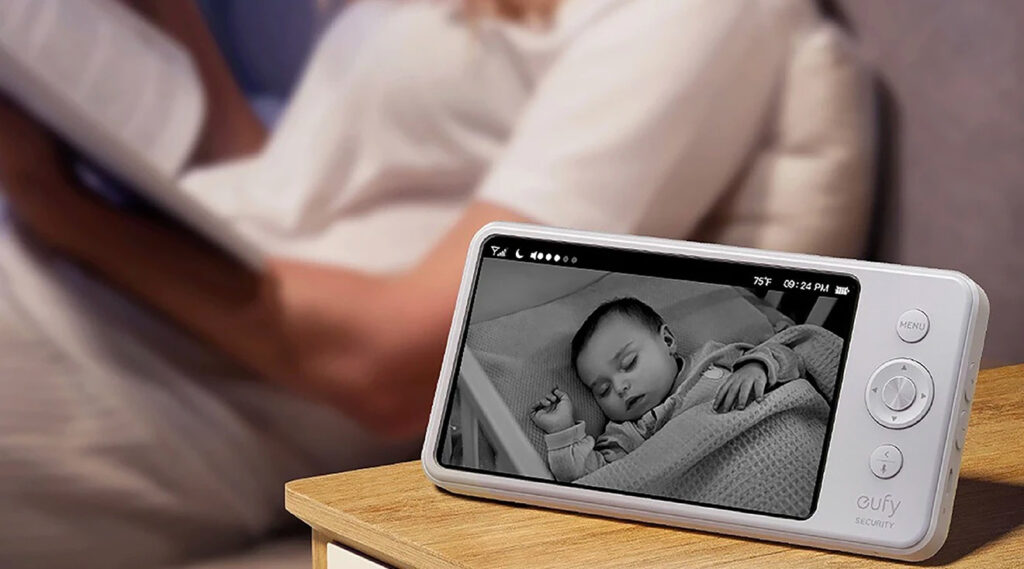
Some of these monitors deliver video only, without any sound, so make sure to check this point while making your purchase. I don’t recommend relying on video only because it’s not practical to keep an eye on the monitor 24/7.
Pros
Here’s a quick list of the pros you can expect with this type of monitor:
- No need for WiFi, so you’ll face no issues in case of an electricity outage or weak internet connection
- You can see if your baby wakes up without making a sound
- You don’t need to turn on the lights or disturb your baby to check on them
Cons
Non-WiFi video monitors come with the following cons:
- Pricier than audio-only monitors
- Short distance ranges
- Short battery lives because of the high power consumption of outputting visuals
3. WiFi Video Monitors
WiFi video monitors are the upgraded version of non-WiFi models, as you can control them through applications you download on your smartphone. Unlike the other types, they consist of only one unit, which is a camera you put in your baby’s room. Instead of having a separate receiver unit, you can view the video and listen to the audio recorded through your phone.
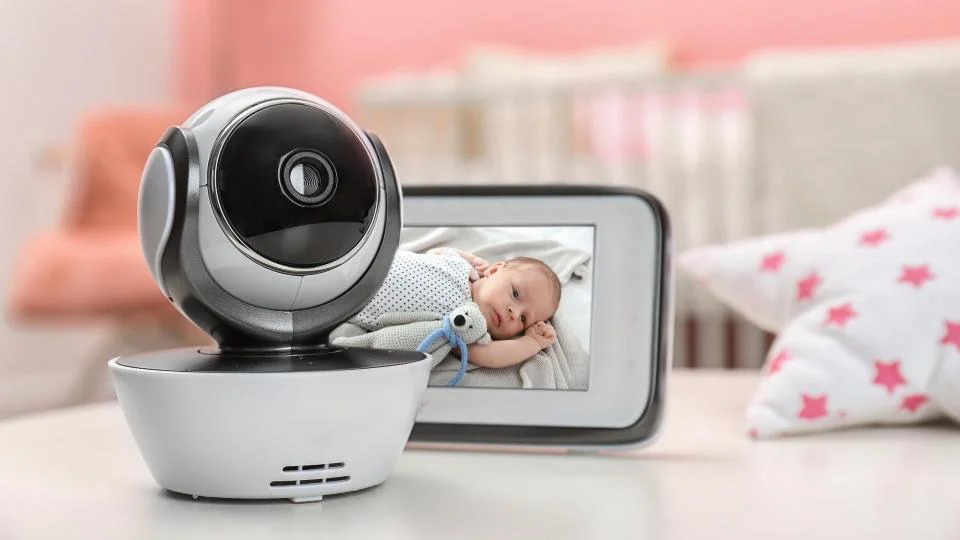
Having tried both, I have to say I prefer non-WiFi monitors. They’re safer because you don’t have to worry about the battery of your phone or the connection to the internet. Unless you leave home a lot and like to keep an eye on your baby, I wouldn’t recommend getting one.
Pros
Here’s a quick list of WiFi video monitors’ pros:
- Easily accessible through your phone, so you don’t have to worry about a separate unit
- Unlimited distance range, as long as you have strong WiFi
- You can connect more than one phone to the monitor, so multiple family members can keep an eye on the baby
Cons
A WiFi video monitor comes with the following cons:
- Pricier than non-WiFi and audio-only monitors
- Most monitors require monthly subscriptions to unlock all features on their phone applications, which costs more money
- Doesn’t work without an internet connection
4. Movement Monitors
Movement monitors aren’t as common as the other types, so you might not have heard about them. Their main job is to detect a baby’s movements while sleeping, including breathing motions. If the child doesn’t move for a long time, the monitor will alert the parents through the receiver unit.
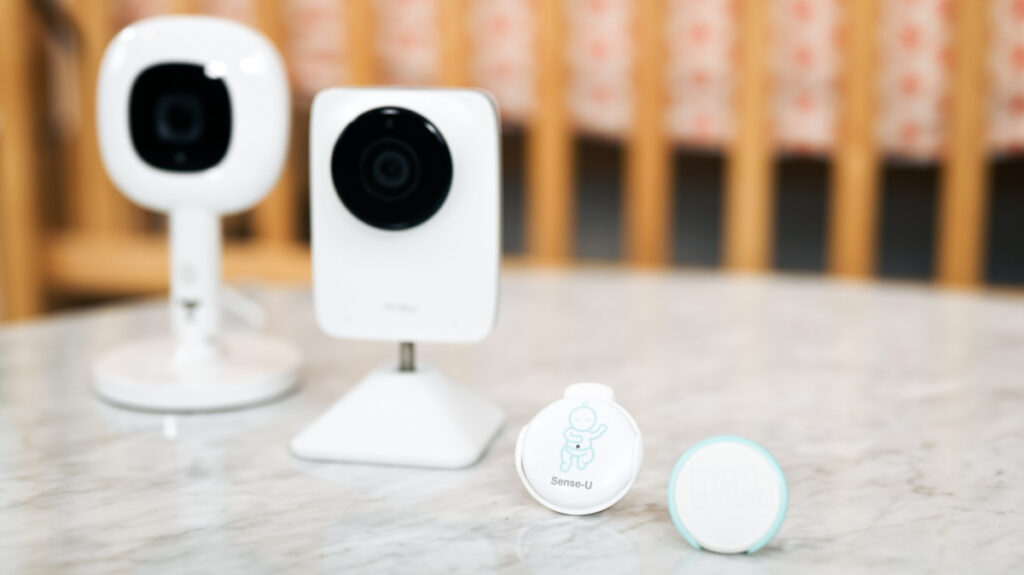
A movement monitor works by detecting your baby’s weight, so you can place it under the bed linens or the pillow.
After trying this monitor, I can honestly say that it isn’t as necessary as the other types. It’s best kept for babies who have health concerns or breathing problems.
Pros
Here’s a quick list of the movement monitor’s pros.
- The monitor alerts you if your baby stays still for a long time, so you’ll know if they got their arms or legs stuck somewhere in the bed
- You’ll be able to monitor your baby’s health while they’re asleep
Cons
Movement monitors come with a few cons, and here’s a brief roundup of them:
- The monitor doesn’t alert you when your baby is awake, so you’ll need another normal monitor beside it
- You should expect a lot of false alarms if your baby rolls while asleep, as they won’t be sleeping over the monitor anymore, so it won’t detect their weight.
5. Wearable Monitors
Wearable monitors are a more innovative version of movement monitors. They have the same job of detecting your baby’s weight and monitoring its breathing rate. However, instead of putting the monitor on the baby’s bed, you’ll wrap it around their hand or foot.
While wearable monitors eliminate the risk of false alarms if your baby rolls during sleep, they’re definitely not a favorite for the little ones. Most babies who are at a moving age are able to take the monitor off by wiggling a lot.
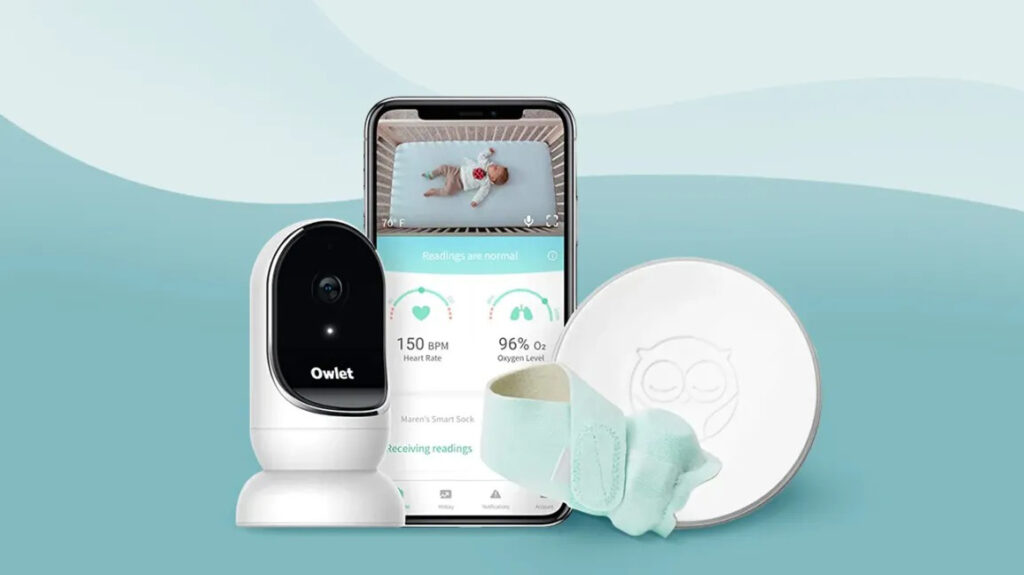
Since these monitors are more advanced than their counterparts, they mostly come with compatible phone applications, through which you can monitor your baby.
Pros
The pros of using a wearable monitor are the following:
- Easy to use and control through phone applications
- More practical and reliable than regular movement monitors
Cons
The cons of using a wearable monitor are the following:
- Many parents don’t like the idea of sticking an internet-connected device to their baby while they sleep
- Some wearable monitors have been reported to cause burns or rashes
- The monitor won’t give you visual or audio output, so you’ll need to buy a regular monitor
Why You Need a Baby Monitor
To this day, many parents don’t believe in the power of baby monitors. If I sleep in a room right next to my baby and can hear if they wake up, why would I need one?
If you have the same question, you’ll be glad to know I’ve made a list of all the situations where you can benefit from owning one!
Sleeping in Separate Rooms
A scenario where owning a baby monitor becomes a necessity is if you have to sleep in different rooms. According to reports I’ve read by the American Academy of Pediatrics (AAP), babies should sleep in the same room as their parents for at least their first 6 months. However, this isn’t an option for many parents.
For instance, some people have small rooms that can’t take a baby’s bed. In this case, you won’t feel at ease unless you can keep an eye and ear out for your baby while sleeping in another room, which is only possible with a monitor.
Leaving Your Baby With a Nanny
If you have to leave your baby with a nanny for a couple of hours, you’ll appreciate having a baby monitor in hand. It’s not a matter of trust in the nanny, but rather a sense of worry about your child wherever they are. I have a very trustworthy sitter, and I still watch that monitor like a hawk!
That said, in this situation, you’ll need a WiFi monitor. All the other types won’t work at wide distance ranges.
Deep Sleeping
If you’re a light sleeper, I admit you might not need a baby monitor that much. However, the story is completely different if you’re a deep sleeper.
Monitors amplify crying sounds, so no matter how deep you’re in slumber, you’ll still wake up to the sound. But if you have to depend on only your ears, you might miss a cry or two while sleeping.
Checking on Your Baby Without Disturbing Them
It’s a habit for parents to check on their babies while sleeping, even if there’s no need. Now, if you turn on the lights every time you check on your kid, they’ll eventually wake up disturbed. A baby monitor can save you from these instances, as most video monitors come with reliable night vision.
This way, you can check on your baby through your phone or the monitor’s parent unit without disturbing them at all.
To Wrap Up
Baby monitors come in 5 different types, audio-only, non-WiFi video, WiFi video, movement, and wearable monitors. I believe that the first 3 are ideal for everyday use, while the last 2 are only preferable for babies with health issues, especially breathing problems.
Ideally, you should assess your needs and choose the type most suitable for your sleeping arrangements, internet connection, and budget. If you need help choosing a specific brand and model, check out my reviews of the best baby monitors on the market!